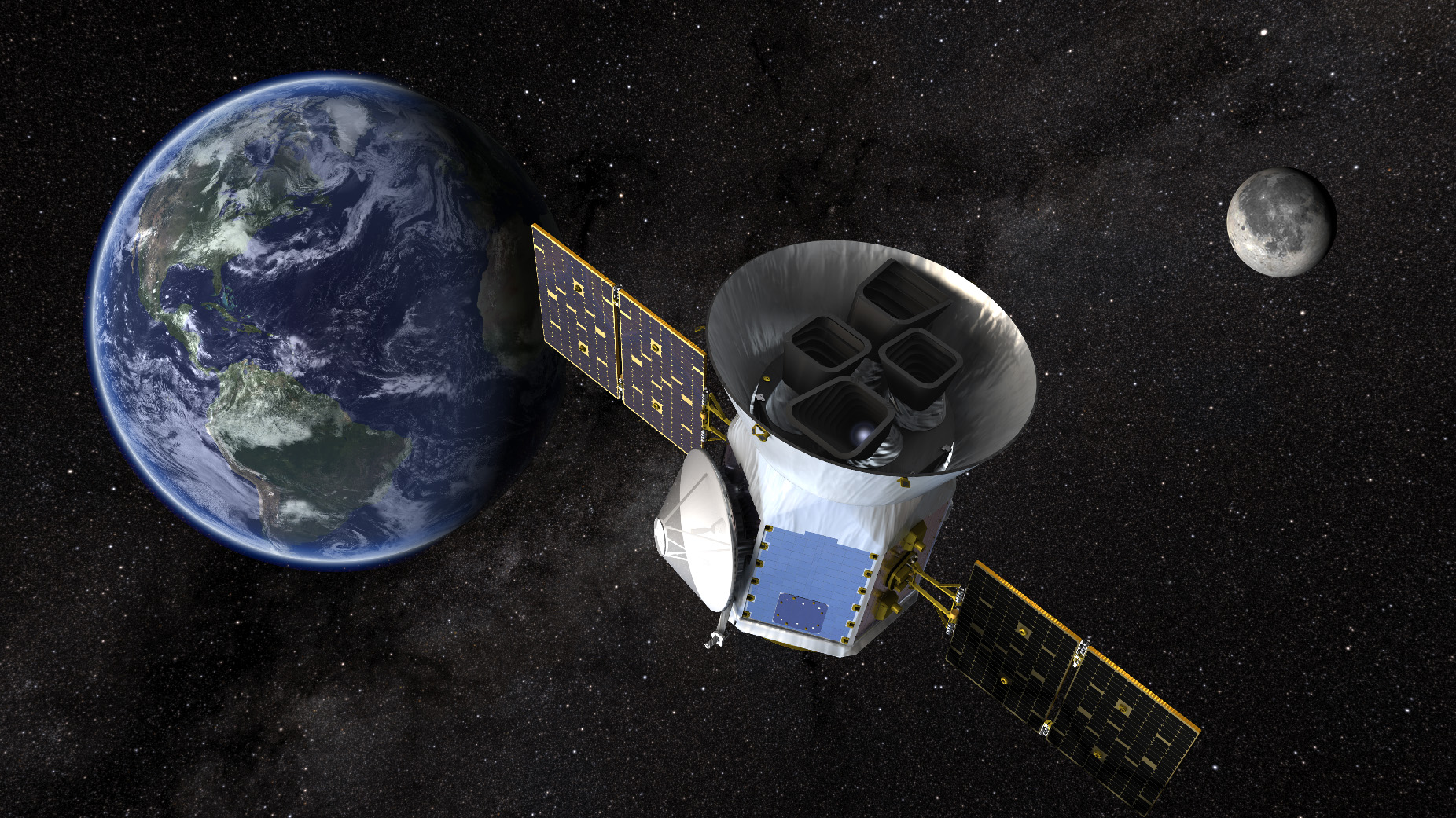NASA's New Planet Hunter Begins Its Search for Alien Worlds

NASA's newest planet-hunting telescope is officially at work.
The Transiting Exoplanet Survey Satellite (TESS), which is designed to hunt for alien worlds around stars not too far from the sun, began gathering science data Wednesday (July 25), members of the instrument team announced yesterday (July 27).
TESS will send that initial data to Earth in August, with new observations arriving every 13.5 days after that, mission team members said in a statement.
"I'm thrilled that our planet hunter is ready to start combing the backyard of our solar system for new worlds," Paul Hertz, director of NASA's Astrophysics division, said in the statement. "With possibly more planets than stars in our universe, I look forward to the strange, fantastic worlds we're bound to discover."
TESS launched on April 18 into orbit around Earth and then underwent a period of testing to ensure the instrument was ready to use. It sent its first photograph, a test image, down to its handlers in May. That image showed 200,000 individual stars, many of which could be accompanied by at least one planet.
TESS follows in the footsteps of NASA's iconic Kepler telescope, which in the course of two missions has identified 2,650 confirmed exoplanets, according to the space agency. Like Kepler, TESS will look for tiny dips in the brightness of individual stars caused by a planet passing between its star and the telescope in its orbit.
But whereas Kepler was limited to poring over a small patch of sky during its primary mission, TESS will study almost all of the sky in its two planned years of observations. During that survey, it will focus on the 200,000 brightest stars in the sky — which means the project should identify planets around many of the stars that skywatchers know and love.
Get the Space.com Newsletter
Breaking space news, the latest updates on rocket launches, skywatching events and more!
The team that designed TESS has calculated that the instrument should spot about 1,600 new exoplanets, including some the size of Earth.
Some planets TESS spots will likely become targets for follow-up study by NASA's much-delayed James Webb Space Telescope, which will be able to study the atmospheres of those planets and begin characterizing them in more detail than TESS can manage.
Email Meghan Bartels at mbartels@space.com or follow her @meghanbartels. Follow us @Spacedotcom, Facebook and Google+. Original article on Space.com.
Join our Space Forums to keep talking space on the latest missions, night sky and more! And if you have a news tip, correction or comment, let us know at: community@space.com.

Meghan is a senior writer at Space.com and has more than five years' experience as a science journalist based in New York City. She joined Space.com in July 2018, with previous writing published in outlets including Newsweek and Audubon. Meghan earned an MA in science journalism from New York University and a BA in classics from Georgetown University, and in her free time she enjoys reading and visiting museums. Follow her on Twitter at @meghanbartels.









